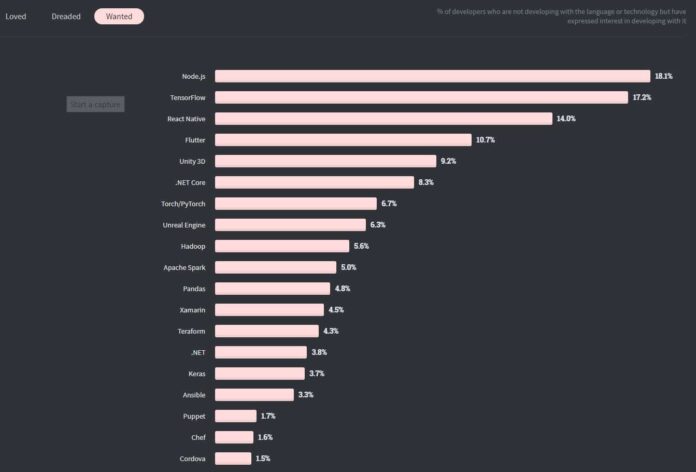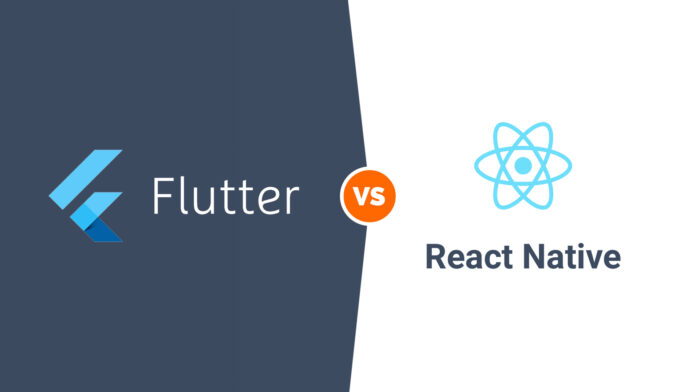In the realm of mobile app development, two frameworks have risen to prominence for their ability to create high-quality, cross-platform applications: Flutter and React Native. Flutter, developed by Google, is renowned for its fast development process and expressive UI, while React Native, an open-source framework created by Facebook, is celebrated for its efficiency and native-like user experience.
Both frameworks offer unique features and capabilities, making them popular choices among developers and businesses alike. The decision to choose between Flutter and React Native can significantly influence the development process and the quality of the final mobile application. For developers and companies looking to build cross-platform apps, understanding the strengths and limitations of each framework is crucial. Partnering with a specialized flutter app development company or React Native consultancy can provide additional expertise and insights when choosing the most suitable framework for a project.
In this article, we’ll delve into a detailed comparison of Flutter and React Native, covering aspects such as programming languages, performance, UI components, and the overall development experience. This comparison aims to equip developers and decision-makers with the information needed to make an informed choice between these two leading frameworks.

Comparing Key Features and Capabilities
When choosing between Flutter and React Native for your mobile app development project, it’s essential to consider their key features and capabilities. Let’s dive into a detailed comparison of these aspects.
Programming Language
- Flutter (Dart): Flutter uses Dart as its programming language. While Dart may not be as widely known as JavaScript, it offers a robust and efficient development experience. Developers proficient in languages like Java or C# find Dart relatively easy to learn given the similarities in syntax and structure. However, there might be a learning curve for those more familiar with JavaScript.
- React Native (JavaScript): React Native relies on JavaScript, one of the most widely used programming languages globally. Many developers are already deeply familiar with JavaScript, making it easier to transition to writing React Native code without learning a new language. The extensive JavaScript ecosystem provides access to numerous libraries, frameworks, and packages that can be leveraged in React Native development.
Performance
- Flutter: Flutter is renowned for its high-performance capabilities. It compiles application code directly to native ARM machine code instead of JavaScript, resulting in exceptionally fast startup times and smooth animations. Flutter’s architecture circumvents the need for a JavaScript bridge, which introduces overhead. This performance advantage is especially noticeable in graphics-intensive apps like high-resolution games.
- React Native: React Native also delivers excellent performance capabilities, but it does rely on a JavaScript bridge to enable communication between its JavaScript execution environment and native platform APIs. This bridge introduces a slight overhead, but it is generally imperceptible in most applications. However, for highly complex apps with intensive graphic demands, Flutter’s tight architecture may offer some additional performance edge.
UI Components and Design Flexibility
- Flutter: offers a remarkably robust and customizable set of UI components through its widget framework. Widgets are the fundamental building blocks of Flutter apps’ user interfaces. This allows developers to quickly construct visually appealing UIs with complete control over the design. Flutter’s composable widget-based approach to UI development is more flexible and expressive, enabling the realization of custom designs with ease.
- React Native: relies on native UI components provided by the target platforms, that is, iOS UIKit components or Android View components. While this ensures that UIs have a true native look and feel with optimal performance, it does limit flexibility for custom designs to some extent. React Native’s composable components align closely with each platform’s standard UI elements and design guidelines. Achieving extensively customized UIs may require more effort compared to Flutter.

Development Experience and Ecosystems
The development experience afforded by a framework directly impacts developer productivity and efficiency during app building. Additionally, the richness surrounding ecosystem of libraries, tools and community support is pivotal for real-world effectiveness. Let’s explore how Flutter and React Native compare on these crucial aspects.
Developer Tools and Ecosystem
- Flutter: offers an incredibly comprehensive set of developer tools and ecosystem for productive app development. This includes the feature-packed Flutter SDK with Hot Reload, a multitude of plugins, Dart DevTools for debugging and profiling, plus built-in integration with Android Studio, Visual Studio Code and Xcode.
- React Native: also provides excellent developer tools, especially with additions like the Metro bundler and extensive Expo tooling. React Native enables access to JavaScript’s massive npm ecosystem for third-party libraries. However, it’s worth noting that React Native’s toolchain integration tends to be less cohesive out-of-the-box compared to Flutter’s opinionated environment. Managing dependencies across JavaScript and native code requires more initial configuration.
Community Support
- Flutter: Flutter boasts a rapidly growing and very welcoming developer community. The framework has gained tremendous momentum among developers lately, with many contributors creating packages, plugins, customized widgets and detailed guides. Consequently, Flutter has outstanding community resources – documentation, StackOverflow support, tutorials etc. – adding further incentive for adoption.
- React Native: As one of the most popular mobile JavaScript frameworks, React Native benefits from the backing of an mature, established community. Having gained traction several years before Flutter’s initial release in 2017, React Native has a solid reputation and a vast user base. This translates to stellar community resources – learning materials, forums, articles and an ocean of libraries. However, the framework’s scale can cause fragmentation with significant variability in third-party resource quality.
The development environment and community ecosystem are pivotal for developer productivity and app delivery timeframes. Both Flutter and React Native excel in these areas with their respective strengths. Flutter offers a tightly integrated development experience with rich first-party tooling support from Google, while React Native benefits from years of community wisdom and JavaScript’s ecosystem dominance. Evaluating team skillsets and project needs is key to determine the best choice.
Framework Architecture Comparison
Under the hood, Flutter and React Native adopt divergent architectural approaches for how app UI code interacts with native platform components. Understanding this core difference is key to comprehending the frameworks’ distinguishing capabilities.
- Flutter: Flutter apps are compiled to native code and leverage a thin platform layer for access to device capabilities like sensors and OS integrations. Most UI rendering occurs via Flutter’s proprietary 2D rendering engine written in C/C++, bypassing native UI components. This explians Flutter’s ability to deliver consistently high-performance 60fps animations across platforms.
- React Native: In React Native, UI components are mapped to their native equivalents (UIKit on iOS or native Android views). JavaScript business logic communicates with native UI layers and exposes platform APIs using an asynchronous batched bridge. While this architecture enables excellent native integrations, the bridging overhead can affect bi-directional communication performance in certain cases.

Making the Right Choice
Choosing between Flutter and React Native is a critical decision in the development journey of a cross-platform mobile app with long-term implications. Both frameworks offer unique strengths and are suitable for various scenarios. Here, we summarize the key takeaways to help you make an informed choice aligned to your project.
Consider Your Project Requirements
The optimal choice between Flutter and React Native should directly align with your app’s business goals, technical requirements and target market positioning. Assess factors like the desired user experience quality-bar, performance bottlenecks, platform coverage by capability, and compliance needs when deciding.
Evaluate Development Team Skillsets
The proficiency of your development team with a framework’s language, architecture patterns and tools has direct consequences on productivity outcomes. Teams highly skilled at Dart or Flutter can build apps faster compared to gaining new expertise. Similarly, JavaScript/React Native veterans require little ramp-up. Consider the opportunity costs of training developers when switching frameworks.
Think Long-Term
Consider your application’s intended longevity and business plans for the future. Flutter’s recent momentum and Google’s financial backing suggest a very promising roadmap. React Native offers stability from years of production-grade usage, but requires more effort to integrate iOS upgrades or new device capabilities compared to Flutter.
Leverage Expert Guidance
Partnering with specialized consulting firms having deep hands-on expertise can provide invaluable technical guidance on choosing Flutter or React Native. Experienced partners preferably with core contributions to both ecosystems can greatly assist navigating their nuances and limitations for your app’s needs.

Final Thoughts
The choice between Flutter and React Native ultimately depends on aligning technical fit to your app’s functionality aspirations and business environment. Both frameworks can deliver successful outcomes within sufficient development effort invested. By carefully weighing your team’s skills, target device OS needs and performance priorities against the considerations presented, you can determine the ideal path for your mobile initiative.
When evaluating the two frameworks, it is important not to view the decision as a simple black-and-white choice. The reality is that both Flutter and React Native bring unique technical capabilities that suit different app development scenarios. Rather than declaring one framework outright “better” than the other, the analysis should focus on mapping strengths to your project goals.
For example, if developer familiarity with Dart and desktop support are vital to your app, Flutter presents significant advantages hard to replicate with React Native. Conversely, for apps deeply reliant on platform-specific APIs or pre-existing JavaScript codebases, React Native naturally aligns better. The end goal is matching the framework most capable of transforming your concept to high-quality mobile product reality within business constraints. By objectively assessing project needs against technical capabilities, you can confidently determine whether Flutter or React Native is the ideal choice to build your next innovative mobile application.





![Calgary’s Hottest Neighborhoods for Luxury Homebuyers [2024]](https://thewashingtonote.com/wp-content/uploads/2024/04/Calgary-324x160.png)



